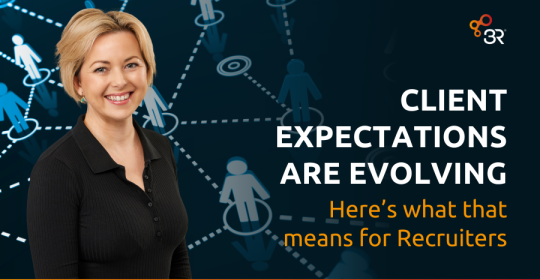The art of recruitment is transforming, and the need for technology within this process has never been more essential than it is today. Businesses need their hiring strategies to be effective, efficient and relevant, whilst ensuring they enhance diversity. So, how can businesses keep up?
Simply put, by using Artificial Intelligence (AI). It is revolutionising the way the early adopters of the technology are recruiting, allowing them to expand their searches into more diverse talent pools, create tailored employer value propositions (EVPs), improve decision making, mitigate biases, and gain unrivalled insights into the strongest candidates.
Time is of the Essence
Even the most effective recruiter will likely spend more than two months reviewing candidate applications. So, when you factor in that most medium to large sized business have a team of people responsible for recruiting, you get a clearer picture of the volume of time being spent on initial reviews and application activities.
This time can be more efficiently spent, and AI can help with this. In fact, it allows recruiters more opportunity to analyse the data and make evidence-based decisions based on it. They can use the data to look for trends, test theories, proactively solve problems and conduct more complex predictive analytics related to sourcing and hiring strategies. Whilst this is changing the way recruiters operate, it is not new, the more proactive businesses and recruiters out there have been feeling its benefits for a while now. That being said, it is never too late to join the party.
Improving the Understanding
Even if you adopt AI, you can’t then simply sit back and relax. After all, as with all technologies, if you stand still, you are only moving backwards. This is the case with AI too. Recruiters must always strive for better. Even when the machine learning is making its recommendations, it is important to always correct the system’s existing biases, and to ensure that it never works using historical data alone. By constantly striving to improve, recruiters will benefit from the best possible candidates being identified quicker than ever.
By following this approach businesses benefit from better algorithms that identify top candidates and quantify the specific features that determine their success. This means that companies are able to show that they are not intentionally discriminating against any applicants.
AI can help with reporting too. Acting as evidence for any hiring decision, should it ever be needed. In doing so, the algorithms replicate this decision making, reducing the influence of bias.
Research
Some might question AI’s ability to reduce bias, especially given reports in 2019 suggesting that an algorithm that was being tested as a recruitment tool by the online giant Amazon, was sexist. As a result of this it had to be scrapped, raising a number of questions about how AI should be applied to talent acquisition.
We wanted to probe this area a little further, so we commissioned the Department of Computer Science at University College London to look into how we can ensure algorithms do not inadvertently fall into gender bias.
The study revealed that if wording or phrases that could unconsciously predict the gender of a candidate were removed from a CV, the algorithm would only be able to make a random gender prediction. This would also not be directly impacted by the loss of information in the transformation and de-biasing steps.
This approach means that greater levels of diversity can be fostered through AI, with any candidate selection meeting with compliance.
The Future
I just want to be clear, I am not suggesting we are going to end up in a ‘people versus machine’ scenario, in fact, quite the opposite. It should all be about how people and machines can work together, to find, attract, engage, hire and then keep the very best talent. AI should be seen as levelling the playing field, helping any business or recruiter find the needle in the haystack.
This can lead to a greater democratisation of recruitment by:
- Recommending candidates who unequivocally perform better - deliver more sales, stay longer
- Keeping better records
- Removing the economic bias
- Enabling employers to better understand what drives performance
- Moving away from the familiar ‘tried and tested’ methods to one that is transforming the way the industry operates
To Summarise
The automated cycle of recruitment means that businesses should have a better talent pool of candidates coming through that also reflects the future leaders they want joining the organisation. Clever data techniques will recommend candidates who unequivocally perform better and thereby deliver more revenue, profit, or stay longer in the business.
AI is crucial in allowing businesses to reduce reliance on traditional methods and gut instinct and, instead, focus more on recruiting using data and evidence-based decision making.
To find out more, please visit www.oleeo.com.







